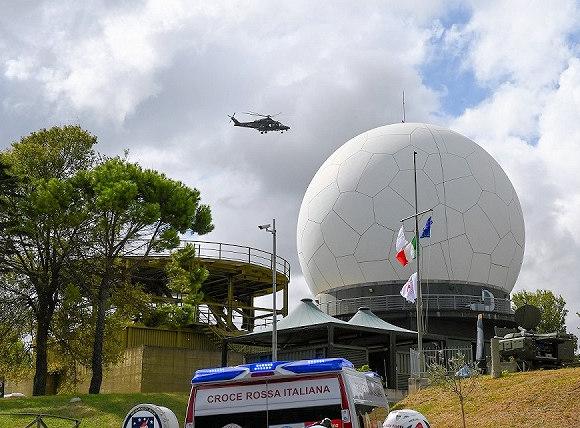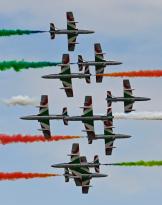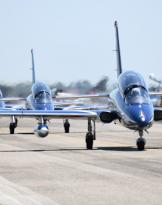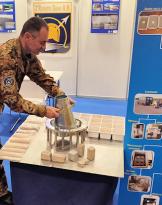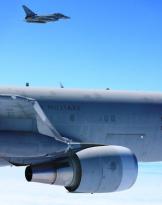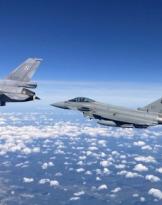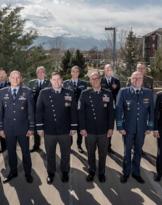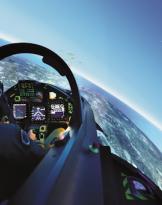The CIS “Elettra” exercise planned and conducted by the 28th telecommunications and air defense systems brigade and the flight assistance of Borgo Piave (LT) ended on Thursday 114th at the 4th remote radar squadron of Potenza Picena (MC). order to test the operational procedures and reaction capacity of the brigade and departments / wings of the Air Force involved in the telecommunications sector, both in case of operations outside national borders (OFCN) and in support and relief operations for populations affected by natural disasters. Among this year's participants, for the first time, also the Italian Red Cross represented by the Marche Regional Committee and the local Committee of Potenza Picena.
Among the Air Force departments involved in the exercise event, the technical communication departments of Linate (MI) and Bari, together with the dependent TLC squadrons, the automated information systems department (RESIA) of Rome, the command and control systems innovation management department (REGISCC) of Pratica di Mare, the 3rd wing of Villafranca, the 15th wing and the 114th remote radar squadron.
The scenario of the exercise, illustrated by its director, Colonel Claudio Enrico Maria Passalacqua, was generated by a hypothesis of “catastrophic event which, in addition to causing numerous victims, drastically reduced the operation of civil structures. In particular, in this case, air transport capacity is compromised, in application of the safety protocols for the transport of patients with serious trauma to equipped hospital facilities. In this context, the Armed Forces were asked to set up, at the Cervia base (RA), home of the 15th wing, a main operating base (MOB) equipped with helicopters for emergency transport and at the 110th SRR (114th SRR) a forward operating base (FOB) which hosts within it the structures of the Italian Red Cross for assistance to the civilian population".
The "Elettra" Exercise, developed in various phases, was conducted by a Headquarters set up at the grounds of the 4th brigade from which the orders for the assets redeployed at the 15th wing and the 114th Remote Radar squadron of Potenza Picena originated . Upon receipt of the activation order Task Units (TUs) promptly deployed and installed the CIS components – communication and information system, in order to achieve the Initial Operational Capability (IOC). Subsequently, the technical-operational tests and checks ensured that the TUs themselves declared full operation, thus guaranteeing, without interruption, reliable communications for the smooth running of operations.
The so-called "LIVEX" phase, i.e. field operations, was then characterized by the observation of the reaction capacity of the organizational units involved in the face of "injects" simulating critical situations that could potentially occur in reality. The Air Force personnel therefore supported the setup of two advanced medical posts and conventional care facilities created by the CRI of Porto Potenza Picena to stabilize patients before transport to hospital.
Among the events managed synergistically between the AM staff and the CRI operators: the resuscitation of a person through the BLSD (Basic Life Support and Defibrillation) maneuvers conducted by authorized AM staff, and then continuing with the recovery operations of an injured person from a TBT (Ground-Edge-Ground) pylon at about 30 meters high, providing for the anchoring, the harnessing of the same and the vertical descent of the technical stretcher at the hands of qualified CRI "SMTS" operators (Rescue with Special Means and Techniques ). Space was also dedicated to a simulation of missing person recovery which saw the CRI dog units as protagonists, trained to operate with the "smell cone" technique, i.e. the finding of a missing person using the odor that the human body leaves in the air, without the need to make the dog smell any article of clothing. Finally, among the events hypothesized and addressed during the Exercise, an "extrication" operation, a technical term used to describe the action carried out by rescuers to extract and free the driver from a crashed car, with subsequent immobilization and safe transport of the same, and a MedEvac (Medical Evacuation) operation which involved an HH139 helicopter from the 15th wing, with the relevant air rescue personnel and CRI operators.
The Commander of the 3rd Division of the Logistics Command, Brigadier General Vincenzo Falzarano underlined that this time too “it was possible to ascertain the efficiency, effectiveness and usability of the CIS components by the structures involved. Furthermore, the participation of the CRI for this edition of the 'Elettra' exercise made it possible to create a realistic logistical-technical-operational context where each actor offered the maximum contribution to train for the dual capacity of the Armed Force which, in addition to the institutional tasks of defense and security of the national space, ensures its support to the population in need".
The 4th telecommunications and systems brigade for air defense and flight assistance of Borgo Piave, the main structure of the 3rd division of the logistics command of the Air Force, has responsibility for the design, construction, installation, maintenance, both on the national territory and in operations outside national borders, telecommunications and electronic systems, radar systems, radio flight and air navigation assistance systems and meteorological support systems. It also has the task of qualifying and training all personnel assigned to the communication information systems (CIS), air defense radar systems, air traffic and weather sectors. The 4st and 1nd technical communications departments, the technical center for Meteorology, the 2th remote radar center and the 134 remote radar squadrons distributed across the national territory depend on the 12th brigade.

